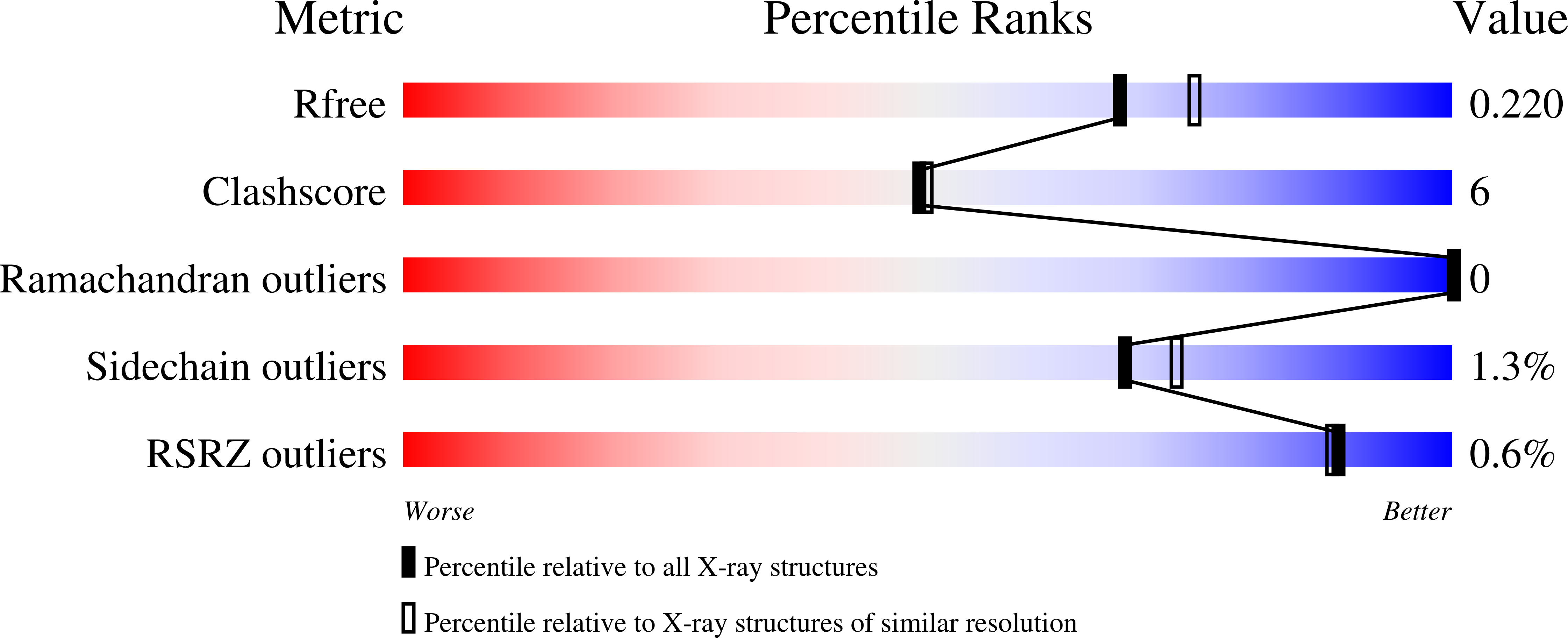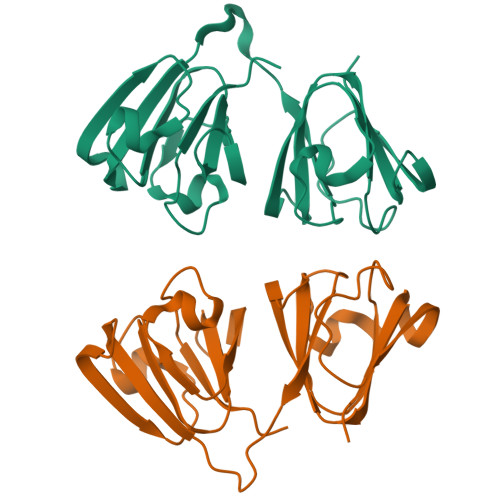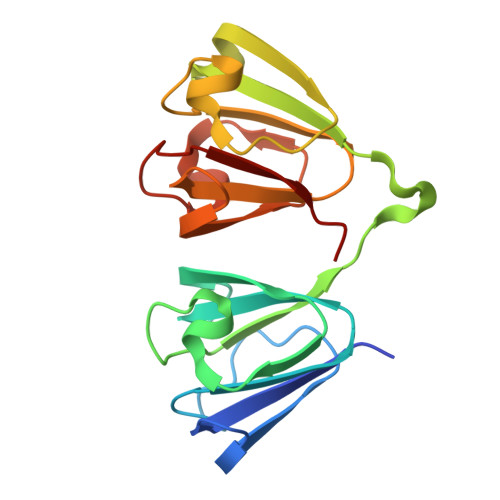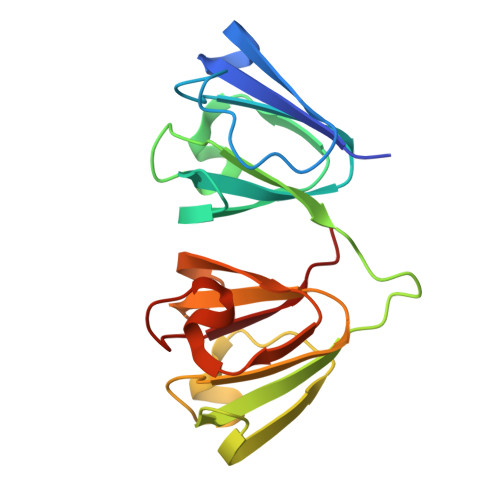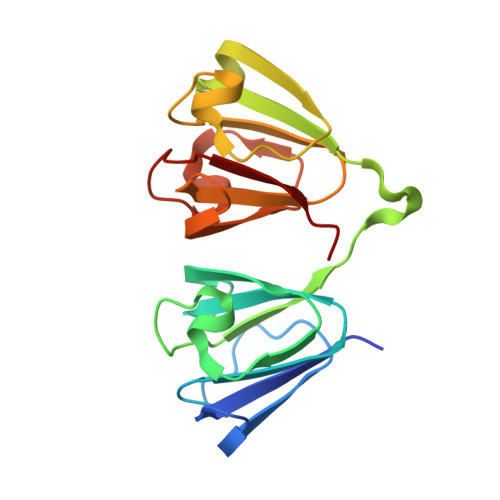Deamidation of the human eye lens protein gamma S-crystallin accelerates oxidative aging.
Norton-Baker, B., Mehrabi, P., Kwok, A.O., Roskamp, K.W., Rocha, M.A., Sprague-Piercy, M.A., von Stetten, D., Miller, R.J.D., Martin, R.W.(2022) Structure 30: 763-776.e4
- PubMed: 35338852
- DOI: https://doi.org/10.1016/j.str.2022.03.002
- Primary Citation of Related Structures:
7N36, 7N37, 7N38, 7N39, 7N3A, 7N3B - PubMed Abstract:
Cataract, a clouding of the eye lens from protein precipitation, affects millions of people every year. The lens proteins, the crystallins, show extensive post-translational modifications (PTMs) in cataractous lenses. The most common PTMs, deamidation and oxidation, promote crystallin aggregation; however, it is not clear precisely how these PTMs contribute to crystallin insolubilization. Here, we report six crystal structures of the lens protein γS-crystallin (γS): one of the wild-type and five of deamidated γS variants, from three to nine deamidation sites, after sample aging. The deamidation mutations do not change the overall fold of γS; however, increasing deamidation leads to accelerated disulfide-bond formation. Addition of deamidated sites progressively destabilized protein structure, and the deamidated variants display an increased propensity for aggregation. These results suggest that the deamidated variants are useful as models for accelerated aging; the structural changes observed provide support for redox activity of γS-crystallin in the lens.
Organizational Affiliation:
Department of Chemistry, University of California, Irvine, CA 92697-2025, USA; Department for Atomically Resolved Dynamics, Max-Planck-Institute for Structure and Dynamics of Matter, Luruper Chaussee 149, 22761 Hamburg, Germany.







